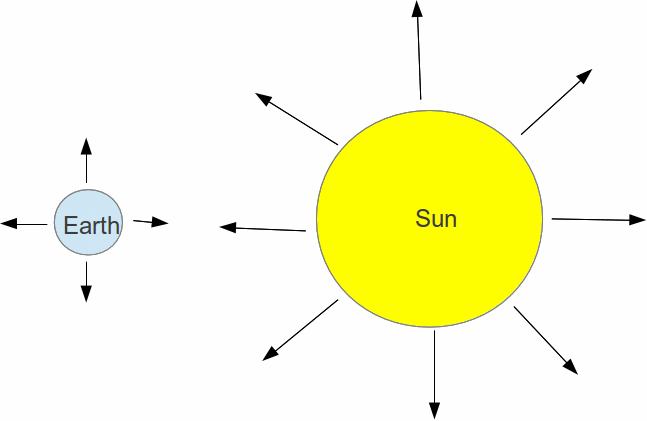The Earth's temperature has fluctuated by less than 8 degrees Celsius for the last 500,000 years, covering about five major changes in climate. When the Earth's temperature was at it's lowest, continental glaciers up to 260 m thick reach the mid latitudes. The most recent period of glaciation ended about 6,000 years ago.
Concern started to grow in the late twentieth century that increasing levels of carbon dioxide in the atmosphere will act to retain heat in the Earth's atmosphere and warm the Earth. A rise of a few degrees Celsius could cause the polar ice caps to melt and cause major changes in the Earth's climate. Widespread drought and famine could be the result.
We can analyse changes in the Earth's temperature using the second law of thermodynamics.

The Earth gains energy from the Sun. If the Earth absorbs energy from the Sun at a rate![]() and loses energy at the rate
and loses energy at the rate![]() If
If![]() then the temperature of the Earth is constant.
then the temperature of the Earth is constant.
Energy absorbed by the Earth is primarily short and visible radiation and energy emitted by the Earth consists primarily of longer wavelength infrared and visible radiation. Carbon dioxide is a strong absorber of these longer wavelengths, so increasing carbon dioxide levels means more of this radiation is absorbed by molecules in the atmosphere so that![]() and the internal energy of the Earth's surface and atmosphere increase and so does the temperature. As the temperature rises the Earth radiates heat at a faster rate and equilibrium is re - established at a higher temperature.
and the internal energy of the Earth's surface and atmosphere increase and so does the temperature. As the temperature rises the Earth radiates heat at a faster rate and equilibrium is re - established at a higher temperature.
Modelling indicates that a doubling of carbon dioxide levels will cause average Earth temperatures will rise by about 3 degrees Celsius. Carbon dioxide levels are forecast to double by 2100.
